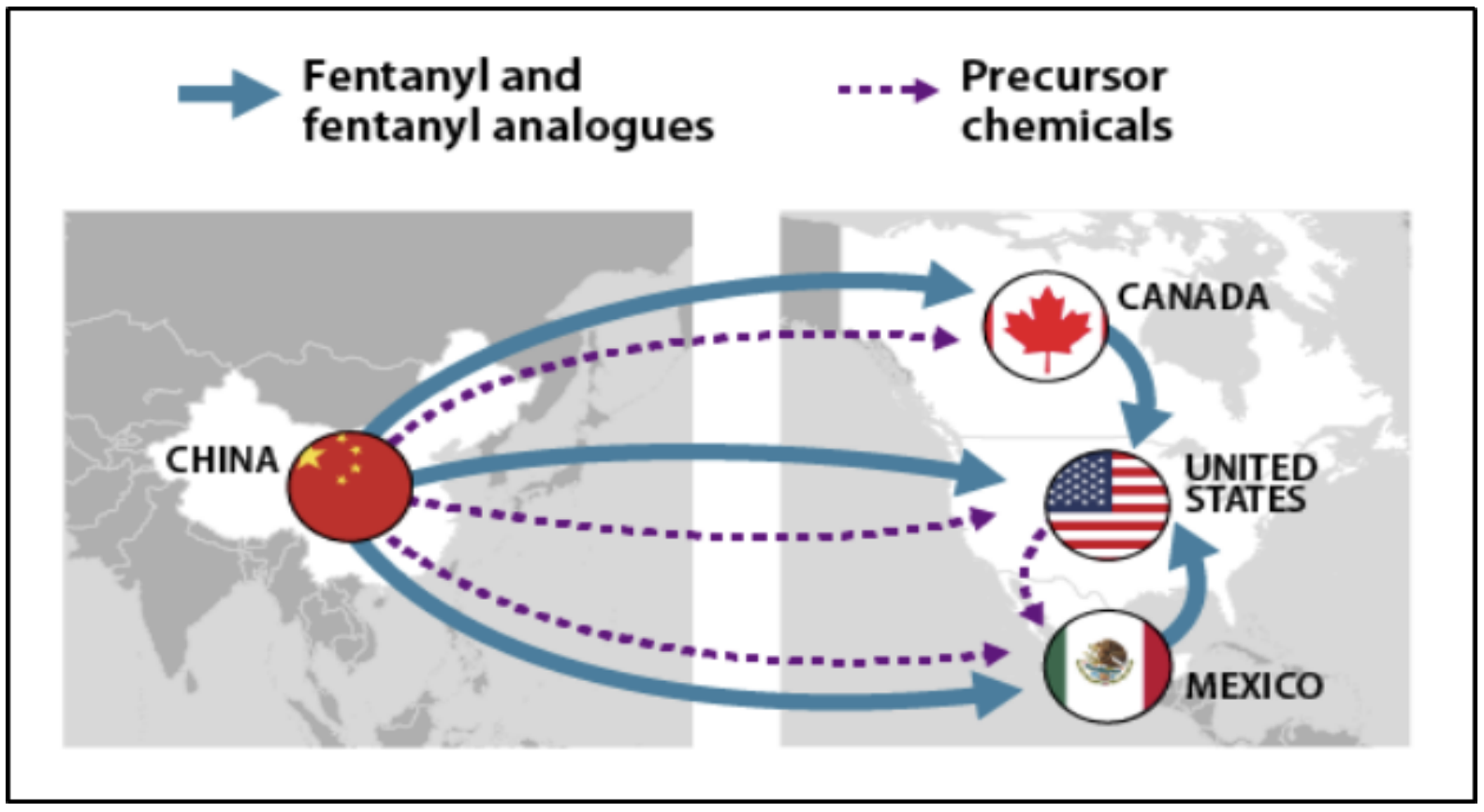In the aftermath of the temporary class-wide fentanyl ban the Drug Enforcement Administration (DEA) ordered in 2018, a lot of the novel synthetic opioids cropping up in the United States faded away. Placing all fentanyl analogs under Schedule I of the Controlled Substances Act didn’t improve anything for people who use the illicit drug supply, but from a forensics perspective it made the supply a little more straightforward relative to what it had been. The only reason transnational trafficking organizations were pursuing fentanyl analogs was because they could do so legally, and without that incentive they just went back to fentanyl.
One analog stuck around: fluorofentanyl. Despite headlines characterizing it as a newer, deadlier form of fentanyl, fluorofentanyl has been around for decades and its potency is about on par with fentanyl’s; usually a little lower. Fluorofentanyl’s intermittent presence in autopsy reports has at times given the media something to latch onto, but it’s functionally the same as fentanyl from the user end.
Sources close to the situation say that in DEA forensics circles, fluorofentanyl’s longevity is usually attributed to legally accessible precursors—the chemical ingredients used to manufacture it. On October 31, the DEA finalized a proposed rule change that will regulate key precursor compounds under Schedule I, as it had been angling to do for several years. The change will go into effect November 30.
Since April, when the White House rolled out its updated “whole-of-government” strategy for disrupting fentanyl supply chains, more and more resources have been funneled toward cracking down on precursors.
“[M]any precursors are used for legitimate purposes and may be legally imported and exported, making it difficult to disrupt the movement of these chemicals,” Customs and Border Protection (CBP) stated in October. “By targeting suspicious locations and recipients that demonstrate patterns of illicit activity, CBP can disrupt the supply chain of illicit fentanyl and its analogues, methamphetamine and other synthetic drugs.”
Having just wrapped a precursor interdiction operation in September, CBP launched a new one on October 26, in collaboration with the Department of Homeland Security. That same week, the DEA updated its Special Surveillance List (SSL) for the first time since creating it in 1999.
The SSL doesn’t carry any regulatory weight, but does impose fines up to $250,000 on those who knowingly furnish trafficking organizations with any of the “laboratory supplies” on the list. The SSL has now doubled in size, but not all the additions are precursors.

A pill press used to mold illicit fentanyl powder into pills
In step with CBP, it’s going after not just the compounds used to manufacture fentanyl and other synthetic drugs, but also the equipment used to press it into pills.
Fentanyl pressed pills arrived in the Western US during the beginning of the COVID-19 pandemic, but they arrived in the broader public consciousness during August 2022 when “rainbow fentanyl” hit the media.
Tableting equipment associated with counterfeit pill production was in the original SSL. But the list now explicitly includes punches and dies, the equipment that presses powder fentanyl into pills and marks the pills with etchings.
The DEA’s “One Pill Can Kill” fentanyl awareness campaign largely hinges on the premise that counterfeit pills look nearly identical to the real thing, and some of them do. These are the ones that serve the DEA narrative in which the overdose crisis primarily affects unsuspecting teenagers buying counterfeit Oxycodone over Snapchat. And people in that demographic are at risk, but not the highest risk.
Cracking down on precursors just pushes manufacturers further into the unknown, fracturing the illicit drug supply in a way that affects everyone, but mostly drug users living in poverty. Discouraging retailers from selling punches and dies won’t necessarily mean much for the populations at highest risk of overdose. There’s no reason to waste time and resources making something counterfeit look believable when it’s going to someone living in an encampment and who will smoke it off tin foil; that buyer knows they don’t know what’s in it.
Top image via Kentucky Office of the Attorney General. Inset photograph via Department of the Treasury.





Show Comments